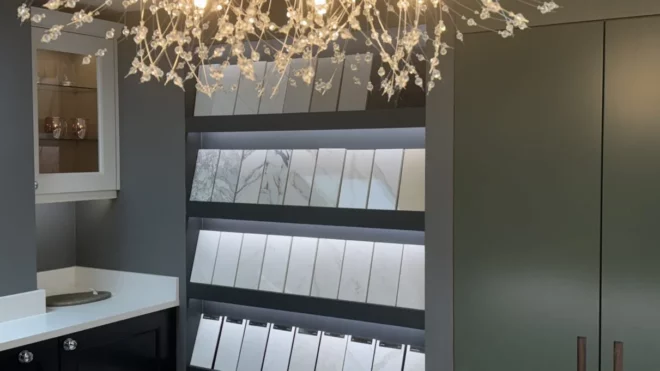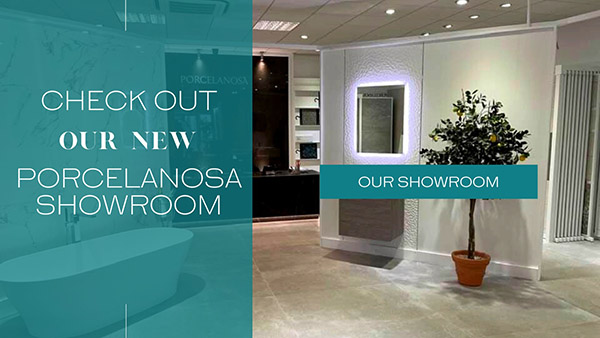You don’t need to be a builder or interior designer to feel overwhelmed by tile jargon. Walk into a showroom or open a catalogue and you’re hit with words like rectified, bevelled, vitrified – and that’s before you even start picking colours. The truth is, most customers have no idea what half of it means, and that’s totally normal. But knowing just a few key terms can help you make smarter choices, ask better questions, and avoid expensive mistakes.
This isn’t a dictionary. It’s a crash course in tile speak – minus the fluff – that’ll make you feel like a pro before your next project begins.
Rectified Tiles
These are tiles that have been machine-cut after firing, giving them perfectly straight, sharp edges. Why does that matter? Because it allows for thinner grout lines and a cleaner, more seamless finish. Ideal for modern, minimalist spaces or large-format tile installations where you don’t want chunky grout distracting from the design.
If you’ve ever admired a tiled wall or floor that looked unusually smooth and precise, chances are it was rectified.
Bevelled Edge
You’ll see this a lot with metro tiles – that classic angled edge which gives each tile a slight 3D effect. It adds texture and interest, especially when light hits at different angles. Great for splashbacks, small bathrooms, or anywhere you want a bit of character without going too bold.
Just note: bevelled tiles need more careful grouting, and they can’t sit flush like flat-edged ones – which is part of their charm.
Vitrified Tile
Sounds technical, but here’s the simple version: vitrified tiles are porcelain tiles that have been fused under high heat to make them extra strong and water-resistant. They’re ideal for high-traffic areas like hallways or commercial spaces. Not as porous as standard ceramic, and they tend to last longer under pressure – literally.
In other words, if you’ve got kids, pets, or heavy use – go vitrified.
Matt vs Gloss Finish
A common decision, and one that makes a big visual impact.
Matt tiles absorb more light and give a softer, more natural look. They’re often used in rustic, earthy or contemporary settings, and tend to be less slippery when wet. Good for floors and laid-back vibes.
Gloss tiles reflect light, which can make small or dark spaces feel brighter and more open. They’re popular for walls, especially in bathrooms and kitchens, but can be more slippery underfoot – so not the best pick for a wet floor unless you’re careful.
Both have their place – the right one depends on where it’s going and what effect you want.
Slip Ratings (R Ratings)
Here’s where things get practical. Every tile has a slip rating – usually marked as R9 to R13. The higher the number, the more slip resistance it has.
- R9 is typically for dry, indoor spaces like walls or bedrooms
- R10–R11 is the sweet spot for most kitchens and bathrooms
- R12–R13 is for areas that get properly wet or need serious grip – think outdoor patios, pool areas, or commercial kitchens
It’s not just about avoiding accidents – it’s about choosing a tile that works for the life you live.
PEI Ratings
You might not see this as often on labels in the UK, but it’s worth knowing. PEI stands for Porcelain Enamel Institute – and it measures how resistant a tile’s surface is to wear.
- PEI 1: Very light use (think decorative wall tiles)
- PEI 2–3: Fine for bathrooms and walls
- PEI 4–5: Good for all residential floors and high-traffic areas
If you’re tiling a hallway or kitchen, aim for PEI 4 or above.
Subway Tile
This one’s more style than technical spec, but it’s everywhere – and timeless. Classic rectangular tiles, originally made famous by New York’s subway stations, usually 75x150mm or 100x200mm in size. You can lay them horizontally, vertically, stacked, staggered, herringbone – it’s one of the most versatile shapes going.
Designers love them because they’re endlessly customisable and work in both modern and traditional spaces.
Bullnose / Trim Tiles
Bullnose tiles are edge tiles with a rounded or finished side. They’re used at the end of a row (e.g. along the edge of a splashback or window reveal) to give a clean, polished finish without exposing the raw tile edge. You’ll also find metal or PVC trim strips used for the same reason.
If you skip this detail, your otherwise perfect tiling job can end up looking unfinished.
Shade Variation
Tiles are made in batches, or ‘lots’, and there can be small colour differences between them. Some ranges even have intentional variation for a more natural look. Manufacturers usually indicate this with a shade variation code:
- V1 = uniform
- V2 = slight variation
- V3 = moderate variation
- V4 = high variation
If you want a consistent tone across a space, stick to V1 or V2. If you’re after that handmade, artisan look, V3 or V4 gives you more character – just be ready for the variation.
Conclusion: Know Enough to Ask the Right Questions
You don’t need to memorise every term or turn into a tile expert overnight. But understanding the basics can stop you from making costly mistakes – like using the wrong finish in the wrong place, or buying something that won’t hold up over time.
The good news? You don’t have to figure it out alone. At Ceramic Tile Warehouse, we walk customers through these choices every day. No pressure. No jargon. Just good advice, proper products, and plenty of tea while you decide.


